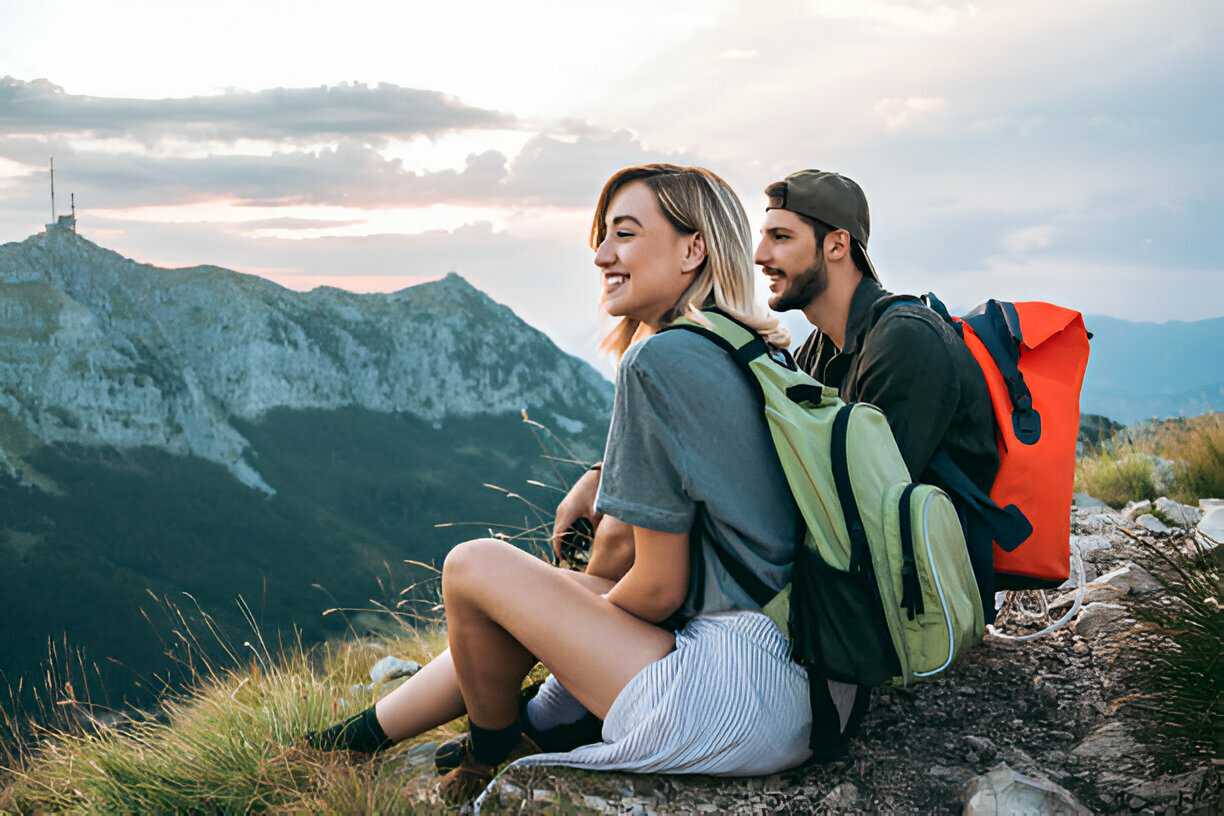Any enterprising person who gets his kicks from exploring Nature would not miss strapping his backpack and getting out in the wild. Solace in embracing nature’s wonders while matching one’s physical skills against its challenge is just exhilarating. Breathtaking landscapes and memories to cherish are all yours to have when venturing into this beauty of nature.
Any lifetime hiker or beginner looking to get his or her feet wet with backpacking will love this. We have put together a list of the best backpacking trips from all over the world. Some include legendary routes; others are off-the-beaten-path jewels that will ignite your wanderlust and have you salivating for more. So grab your gear and lace up your boots. Let’s start a journey full of awe-inspiring hikes and unforgettable memories.
Top Best Backpacking Trips in the World
1. Osprey Renn 50L Women’s Backpack
Osprey Renn 50L Women’s Backpacking Backpack
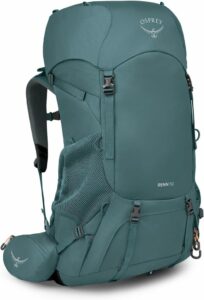
- Manufacturer: Osprey
- Department: womens
- Item Weight: 3.4 pounds
- Capacity Total: 50 Liters
The Osprey Renn 50L backpack is designed for women. Now, the Cascade Blue color with a dash of Melon Orange is the icing on the cake. This Osprey backpack has an internal frame. It gives great comfort and support. This pack is aimed at long treks and outdoor activities. The shoulder harness is ergonomic and adjustable. Together, along with the hip belt, they provide a perfect body fit.
It has an extensive capacity of 50L. Users can put as much gear as they need. These could be clothing, gear, or even trip provisions. The pockets and compartments are well-placed. They allow easy organization and access to your things. It’s strong build and tough materials make it reliable for even the roughest of terrains.
The Osprey Renn 50L Women’s Backpacking Pack can deliver on functionality. Also, it’s very timely. Its vibrant colors are Cascade Blue and Melon Orange. They add style to outdoor trips. This pack is comfortable, tough, and a bit stylish. So, it’s the must-have for any woman adventurer.
Pros
- Comes in 2 torso sizes, which can be hard to find at this price
- Available in two sizes that can be adjusted further with torso length adjustments
- Adjustable torso length
- Adjustable torso length, 2 sizes available
- Great for heavy loads
Cons
- Heavy when empty
- Can take a while to get the fit just right
2. TETON Sports Explorer Internal Frame Backpack
TETON 65L, 75L, 85L Explorer Internal Frame Backpack
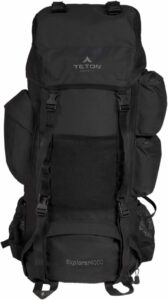
- Manufacturer: TETON Sports
- Department: unisex-adult
- Origin: Imported
- 5187 Cubic Inches (85 Liters)
You need the TETON 65L, 75L, and 85L Explorer Internal Frame Backpacks for avid hikers, campers, and backpackers. The backpack is durably constructed to accommodate an individuals ever-ready lifestyle and provide them with a spacious design for any adventure. Includes rain cover for that added layer of protection to protect your gear from those unexpected downpours.
Great support and comfort. This makes it easy to carry any heavy loads offered around for extended periods. Besides, the adjustable shoulder straps and waist belt will allow a custom fit. The Teton Explorer Internal Frame Backpacks are awesome and foremost for anyone looking to get a reliable and functional backpack.
Pros
- Comes in three sizes to fit different torso lengths
- Customizable fit
- Adjustable torso length
- Comes with rain cover, sleeping bag compartment, and compression straps
- Excellent support and comfort adjustments
Cons
- Heavier than most backpacks
- Bulky even when empty
3. Osprey Atmos AG Hiking Backpack
Osprey Atmos AG 65L Men’s Backpacking Backpack
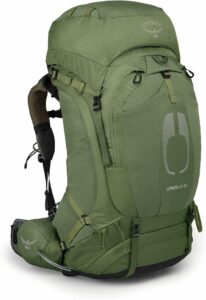
- Manufacturer: Osprey
- Department: Men’s
- Item Weight: 4.8 pounds
- Capacity Total: 68 Liters
The Osprey Atmos AG 65L Men’s Backpacking Backpack comes in Mythical Green, size L/XL, and it’s an exceptional hiking daypack anywhere. Osprey is a renowned brand that constructed this backpack to be comfortable, durable, and with an Anti-Gravity suspension system that gives unmatched support—so much so that it feels almost as though the pack is floating light on your back.
There is plenty of room in this 65L capacity pack to carry all you might need, be it for long hikes or backpacking trips. Has plenty of room for all your gear and personal effects. The Green color is stylish. With an ergonomic design, this pack sits well on long treks. The Osprey Atmos 65L backpack is phenomenal. It combines performance, comfort, and essence—right in this pack. Every serious hiker or backpacker should own one.
Pros
- Superior comfort even with heavy loads
- Excellent ventilation
- Osprey Anti-Gravity (AG) technology is incredibly comfortable
- Lots of storage options
- Great ventilation
Cons
- Complex suspension system
- Not as much storage for easy-to-reach items
4. MOUNTAINTOP Hiking Backpack
MOUNTAINTOP 80L Internal Frame Backpack for Man & Women
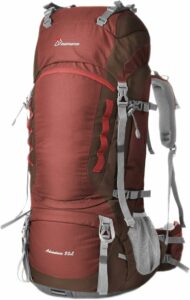
- Manufacturer: MOUNTAINTOP
- Department: unisex-adult
- Item Weight: 2.2 pounds
- Capacity Total: 80 Liters
This mountaintop 80L internal frame backpack is reliable and sturdy. For men and women who love backpacking and hiking, this maroon color adds a little stylish touch to this very functional backpack. The frame provides great support and stability and makes it comfortable to wear, even in long treks. Also, this backpack comes with a rain cover that will be great for outdoor lovers.
They require additional protection against unexpected weather conditions. The backpack offers ample storage space and is highly organized, having bag compartments and pockets. They are for organizing gear and essentials. Material used is tough and water-resistant to ensure that it can withstand rough terrain, keeping your belonging dry. The MOUNTAINTOP 80L Internal Frame Backpack is an excellent investment for those who yearn for adventure in the outdoors.
Pros
- Packs down small
- Comes with a rain cover and a protective bottom compartment for sleeping
- bags or shoes
- Under $100
- Detachable daypack
- Chest and hip straps are adjustable for different body types
Cons
- Heavy when fully loaded
- Heavy (4.9+ lbs.)
5. THE NORTH FACE Women’s 55 Backpack
THE NORTH FACE Terra 55 – Women’s
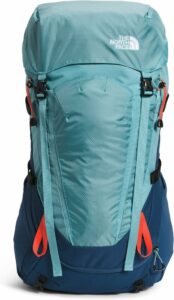
- Manufacturer : The North Face
- Department : womens
- Capacity Total: 55 Liters
It is a woman’s backpack. It’s called the North Face Women’s Terra 55 Backpacking Backpack. It is perfect for every kind of outdoor adventure. The manufacturers created this backpack specifically for women. This backpack fits comfortably and offers many stand-out features. Its spacious design allows for plenty of storage space, yet it remains light and streamlined in nature.
It will be tough with materials making up the backpack that can take rough terrain coupled with harsh weather. The hipbelt and shoulder straps are adjustable to provide comfort that is tailored to an individual while on a journey. A pack with loads of pockets and compartments enables easy organization of one’s gear. Also, the sleeping bag compartment is an added feature. Top pack: Quality, functionality, and style—what more could you want in a backpack? It’s a must for every lady adventurer.
Pros
- Good storage options
- Adjustable
- Adjustable back panel and suspension system
- Adjustable torso length
- Available in women’s-specific version
Cons
- No hip belt pockets
- A little heavy exterior pockets are small
- The main compartment is so big it can be hard to find stuff
Gear You’ll Need for a Backpacking Trip
As you get ready, you will realize that some of the best backpacking trips require having the right gear. One of them is a high-quality backpack; it is designed for backpacking. Look for one that has comfortable suspension with many compartments for your gear and straps for extra equipment. The material should be strong as well and, at the very least, water-resistant to keep your belonging dry.
Next in line is the sleeping gear. You want a light and compact sleeping bag, appropriate to the climate you will find yourself in. Then, have a good sleeping pad also. This will provide insulation and cushioning for a fine night’s sleep. Get a light tent too. It will be easy to pitch and strong enough to withstand many kinds of weather.
Make sure you’re wearing proper footwear next. Boots that support and stabilize the ankle, provide a firm grip on all sorts of surfaces, are vital. Wear them in well in advance of your trip to ensure that they break in properly, so you aren’t dealing with blisters and discomfort. Also, pack plenty of pairs of moisture-wicking socks. They keep your feet as dry as possible, thus minimizing the risk of blisters.
Finally, do not forget about water and food. A water filter or purifier is very critical as it allows one to access clean drinking water while backpacking. Look for something lightweight, portable, and compact enough to slip into your backpack. For food, select lightweight nutrient-dense food. These constitute dried meals, energy bars, and path mixes. In addition, not forgetting a handheld cooker and eating utensils for preparing meals.
The bottom line is, get the right gear for a good backpacking experience. Invest in a comfortable backpack, quality sleeping gear, and reliable footwear. More importantly, have basic items for hydration and nutrition. Researching and investing in these items will make your backpacking adventures better. They will be comfortable and enjoyable.
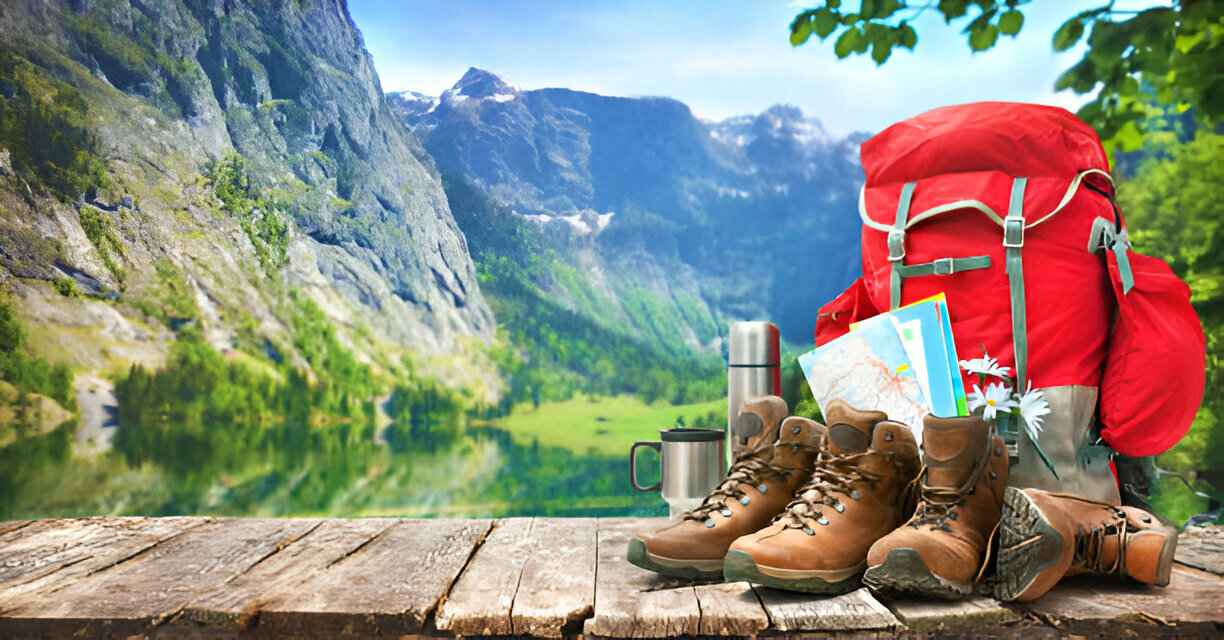
Feel like going for that once-in-a-lifetime backpacking adventure? You could be hiking solo or with some friends; in either case, you must train. Training sets you up both physically and psychologically for what lies ahead on your trip. Here are tips on how to train for a backpacking adventure. These will allow you to crush whatever terrain you might face and get the most from your outdoors experience.
First, it helps to know how long and how hard your backpacking trips are going to be. This will be important in developing a training program tailored to your individual needs. Start with some cardio and strength training. They will make you more enduring and enhance your stamina. Hike, run, cycle, and swim as much as possible to develop good heart health. These exercises are also going to create strong muscles, mostly in the legs, core, and back, which are important for lugging heavy packs over a long distance.
Remember to gradually increase your workouts, mimicking the conditions of your backpacking trip. For example, carry some extra weight in your backpack during your hikes, so that by that time you are almost near to your departure date, you will get used to the extra load on your back and shoulders. This will prevent any kind of shocking discomfort during your journey.
Another part of training for a backpacking trip is the mental preparation. Spend some time studying the route you would be taking. Flip through the maps and picture yourself at the summit, or wherever your destination may be. This aspect is as important to your mental compatibility with physical fitness for progress to be made throughout long hikes and strict landscapes. Therefore, begin practicing your mindfulness and meditation techniques that can foster focus, concentration, and mental toughness.
Finally, do not sell yourself short on trying out your backpacking gear before the trip. Take your time to pack your bag well. Ensure that it is organized, balanced, and comfortable to carry. Practice pitching your tent and then running your stove and other gear that you plan to take along. Knowing your gear can save a lot of time and headaches on the trail and will enhance your confidence and feelings of independence.
In sum, train for your backpacking trip. It’s the key to getting the most out of your adventure. Cardio should be mixed with strength training exercises in a bid to not only build endurance but also to simulate conditions you will find yourself exposed to for a successful and fun journey. Also, prepare mentally and learn how to use your gear basically for building toughness and confidence. Lace up those hiking boots, train, and get ready to enjoy the best backpacking trip of your life!
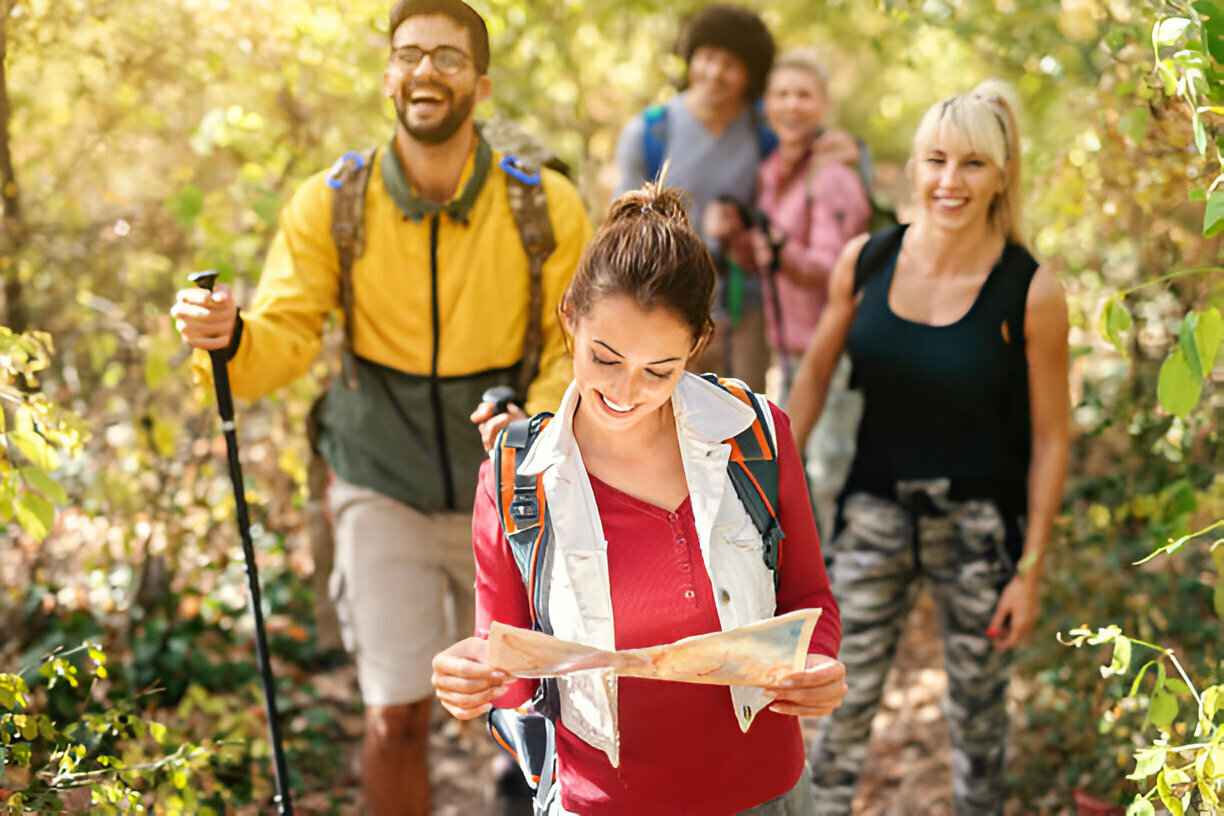
Is It Safe to Travel Alone?
Traveling solo may be very thrilling and life-changing but definitely not safe. This is one question that pops up in the mind of many solo travelers, especially those on backpacking trips. Of course, there are risks when you are traveling solo, but taking precautions can make it safe and fun.
Understanding your destination well is one of the ways to be safe while traveling alone. Always remember to learn about different local traditions, culture, and safety concerns. They are place-specific. This shall arm you with an ability of making informed decisions. It will also help you avoid danger.
Most importantly, however, one must keep in touch with others while traveling. Let your family or friends know where you are and what you will be doing. Report in regularly. Take advantage of technology. Safety apps and GPS devices can be downloaded. At the same time, solo travelers can avail of hostels or group tours. These provide good opportunities to meet with fellow travelers and enhance safety because of numbers.
Also, trust your instincts. And, adhere to some basic safety guidelines. They include staying alert of your surroundings and the people in them. Also, keep your valuables safe and steer clear from compromising situations for the most part. Gaining self-confidence is vital. Being very assertive when required will keep you safe as a solo traveler.
Solo travel has its risks. But with proper research, planning, and precautions, it can be incredible. The trick is to put safety first. But do not let fear get in the way of your adventure to new places; follow these guidelines that will give you some peace of mind as you can enjoy some of the world’s best backpacking trips.
How Much Does It Cost to Go Backpacking?
Backpacking has of late become more popular. It’s an adventurous and way to travel. You might be a seasoned traveler or a novice explorer. One of the first questions you ask is, “How much does it cost to go backpacking?”
Indeed, the cost of a backpacking trip can be very low or high. It will ultimately depend on factors like your destination, length of trip, and personal choices. Very importantly, one must plan and budget effectively in order to ensure that travel runs smoothly and is enjoyable.
What’s really nice about backpacking is the latitude it gives one in terms of expenses. One can camp in national parks or take up accommodation in youth hostels—many more options are available to suit different budgets. Other things that will help you save money are preparing your food and using local transport.
While considering backpacking at its best, the cost may differ with respect to places. Places like Spain, Portugal, and the Balkan countries provide decent and affordable accommodation. They also have transit systems available at an affordable cost. Southeast Asia comprises countries like Thailand, Vietnam, and Cambodia. It is also preferred by budget backpackers. This is because of the cheap street food, lodging, and tourist activities.
It’s worth stating that the cost of a backpacking trip doesn’t mean only the amount of money spent. Backpacking is all about different cultures to be experienced, from saying yes to spontaneous adventure to actually making truly lifelong memories. It is these things in which it becomes truly priceless.
Ultimately, how much a backpacking trip costs can include a lot of variables. These include a destination, the number of days one is going to spend on the road, and personal choices. Careful planning and budgeting have made it possible. They have made it so that you can enjoy one adventure after the other, and never forget it. It is all possible without emptying your pockets. So lace up those hiking boots, strap on that pack, and get ready for an adventure.
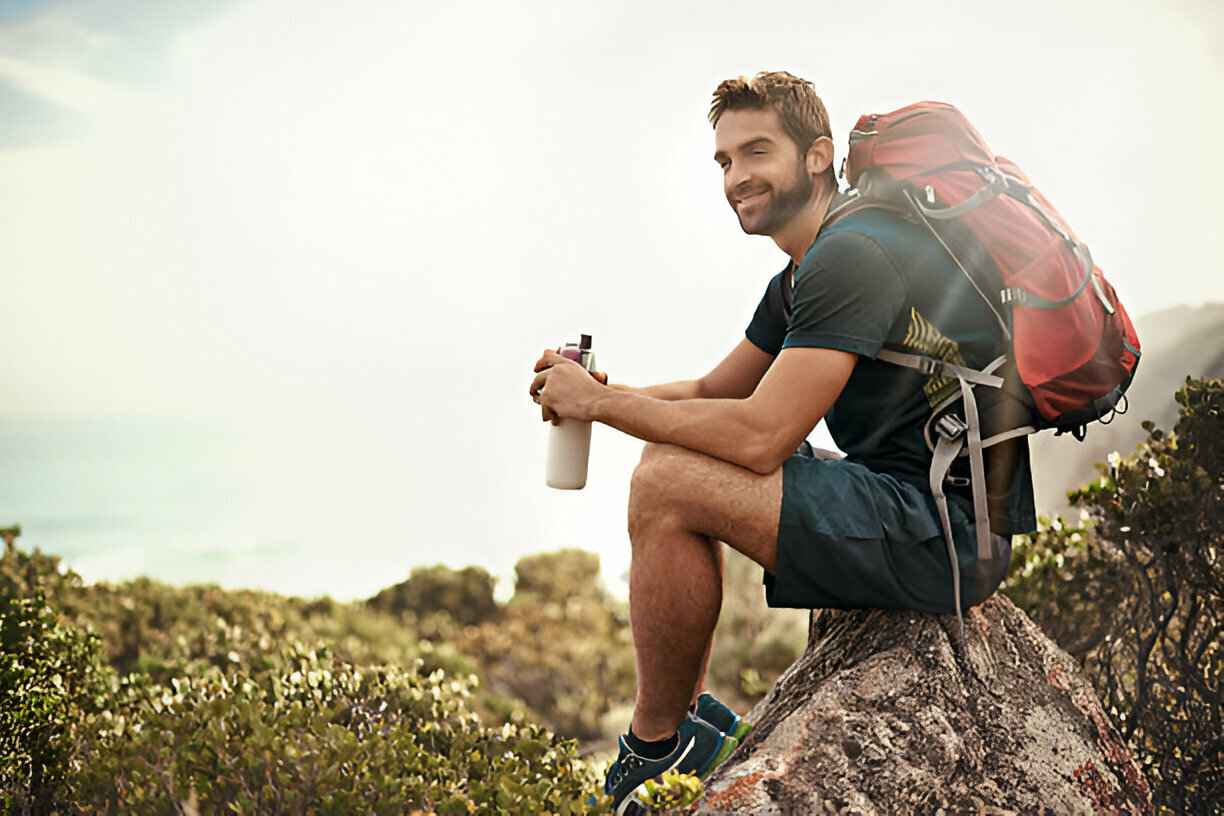
Where Can I Camp on a Backpacking Trip?
Any serious backpacker is always on the lookout for trips that best fit their style. Whether it’s a lakeside campsite filled with tranquility or a mountain peak with breathtaking views, any backpacking trip you take has to include some perfect camping spots. You can set up camp at them and be in nature.
STH Wonder not at all, Pacific Crest Trail is like all-time backpackers’ hinterland. The trail is stretching for over 2,650 miles from Mexico to Canada. About any other mile of this epic trail is a designated campground, and sometimes it’s a dispersed camping area, and sometimes it’s a stunning backcountry site: pitch your tent by a glistening alpine lake or amid towering pines. From so many options, PCT offers really a varied option for camping.
Another high destination for backpacking in the United States is the Appalachian Trail. The trail spans over 2,190 miles from Georgia to Maine. While hiking along this storied pathway, there are many shelters for thru-hikers that provide a dry, safe spot to lay your head for the night with a nearby water source. In addition to the shelters, primitive campsites can be found along the trail, providing backpackers with the opportunity to view the East Coast wilderness in all its glory.
Moreover, the backpackers questing for beautiful scenery must come down the High Sierra Trail. It is located in California’s Sierra Nevada Mountains. One can view granite peaks, transparent lakes, and green meadows here. It also caters to excellent camping spots. You may camp next to Guitar Lake. It contains an exquisite reflection of Mount Whitney. Or one could have pleasant options like Hamilton Lakes or Precipice Lake. You find these camping choices very much to your satisfaction.
Whatever it is that wanders you to lust, there’s an endless supply of backpacking trips for it. They’ll offer up camping that’s simply unforgettable. You ought to find beauty on the Pacific Crest Trail. You must find charm on the Appalachian Trail. You will be in a trance on the High Sierra Trail. All of these immerse you in nature’s wonders. So slip into your hiking boots. Pack up your gear and get ready to embark on a truly awesome backpacking journey. You’ll camp at some of the most stunning locations along the way.
Has fellow adventurers been looking for new trails and routes to tackle? Has the backpacker in you been wondering about available backpacking trips? You’re in luck! This article gives you a guide on finding trails and routes, plus the necessary maps to get you there.
One is able to find trails and routes by using online resources first. There are always websites and applications that discuss hiking trails. They give you complete coverage of national parks and backpacking spots. Some helpful websites are AllTrails, HikingProject, and Trails.com, with their in-depth databases of user reviews, difficulty ratings, and descriptions of trails. You can navigate your way through trails by location, by distance, or by degree of difficulty, which should help you into the perfect adventure.
In addition to online sources, get connected with local outdoor groups or hiking clubs. Some fantastic sources are found there. They are the source for fixing you up with inside information on lesser-known trails and special spots close to home. Hike with and attend events and workshops from these groups to meet fellow outdoor enthusiasts. You can glean valuable details about specific backpacking trips as well.
Another essential tool in finding trails and following them is maps: topographic, trail maps, and GPS. They can be quite helpful when going to new places. Get detailed maps of areas you want to explore from your local outdoor store or online retailers. Maps provide elevation, trailheads, water sources, and other landmarks. They will make your backpacking trip safer and more pleasurable.
Long story short, trail and route finding is very important. And so are maps you can count on. They are the first steps of setting up your next backpacking trip. Use online resources, connect with local outdoor groups, and purchase good maps. Here you will be assured of a successful and marvelous trip. So, how about getting started? Begin your research right now. Pack up your backpack and go for the best ever backing trip of your life!
What Food Should I Bring? What if I Get Hungry and Run Out of Food?
Most likely, the single most important consideration that you should make when planning is the food that you will eat; however, the trick is to choose the most nutrition packed, lightweight foods so you can keep going. Such lightweight, nutrient-packed food would include: dehydrated meals, energy bars, nuts, and dried fruits as your mainstays. Instant noodles and powdered soups are also excellent choices for a warm, filling meal at camp. It is essential to have enough foodstocks packed for the duration of the journey, but what if it runs out?
Running out of food while on a backpacking adventure could be a harrowing situation; however there are things that can be carried out to avoid such a circumstance. First, plan meals and snacks with forethought, making sure to pack extra servings in case food plans don’t work out or changes are made in the itinerary. Additionally, weigh the difficulty of the trail along with the terrain and your estimates of food needs. It’s better to err on the high side than on the low side of needs.
If you do run out of food, there are a few options. Look for edible plants and berries that are safe to eat in the wild. Familiarize yourself with the local flora and fauna beforehand, and always bring a field guide with you. Fishing or hunting also can be an option if you are aware of the regulations and restrictions in the area you hike. Finally, don’t hesitate to enlist the help of other hikers or locals should you need help or advice about nearby food sources.
Remember, the key to a successful backpacking trip is planning ahead and being prepared, and that includes enough food to keep you going.
How Do I Stay Warm and Dry—and Alive?
A guide to the best backpacking trips, featuring outdoor survival skills through staying warm and dry. Does this not sound like a perfect scenario? Maybe you are walking in these big mountains, covered with snow, or walking on the damp forest grounds. Proper preparation and equipment, therefore, are of the essence. Begin by layering your clothes. You will want moisture-wicking base layers topped with insulating mid-layers, which are in turn covered with a waterproof outer shell. This traps the heat, wicks away the sweat, and keeps out the rain or the snow.
Good gear is important. It should be of good quality. Look for a tent with a good tent, sleeping bag, and a rainproof in addition to that. Seek tents with rain flies and sealed seams, as they are capable of keeping the water out. Also, pick a sleeping bag suitable with a proper temperature rating matched according to the conditions you will be in. A backpack that is rainproof will ensure the personal things inside are safe and dry, including extra clothes and gadgets like electronics. Extra dry clothes can be kept inside sealed bags.
You also need to be able to rank two things to stay warm and dry while backpacking. You need to build fires and pick campsites. See if you can find a dry, protected area to camp, out of harm’s way. A fire can provide both warmth and comfort in its light; it can make you feel more secure. Be sure that you have enough firewood and how to start a fire. It’s wise to pack a small stove or fuel for cooking. Follow-up hot meals raise your body temperature and greatly uplift your spirits.
A suitable campsite is also sought, and remembering at such moments to focus on building a fire, really. And yes, remember to have a secondary cooking plan.
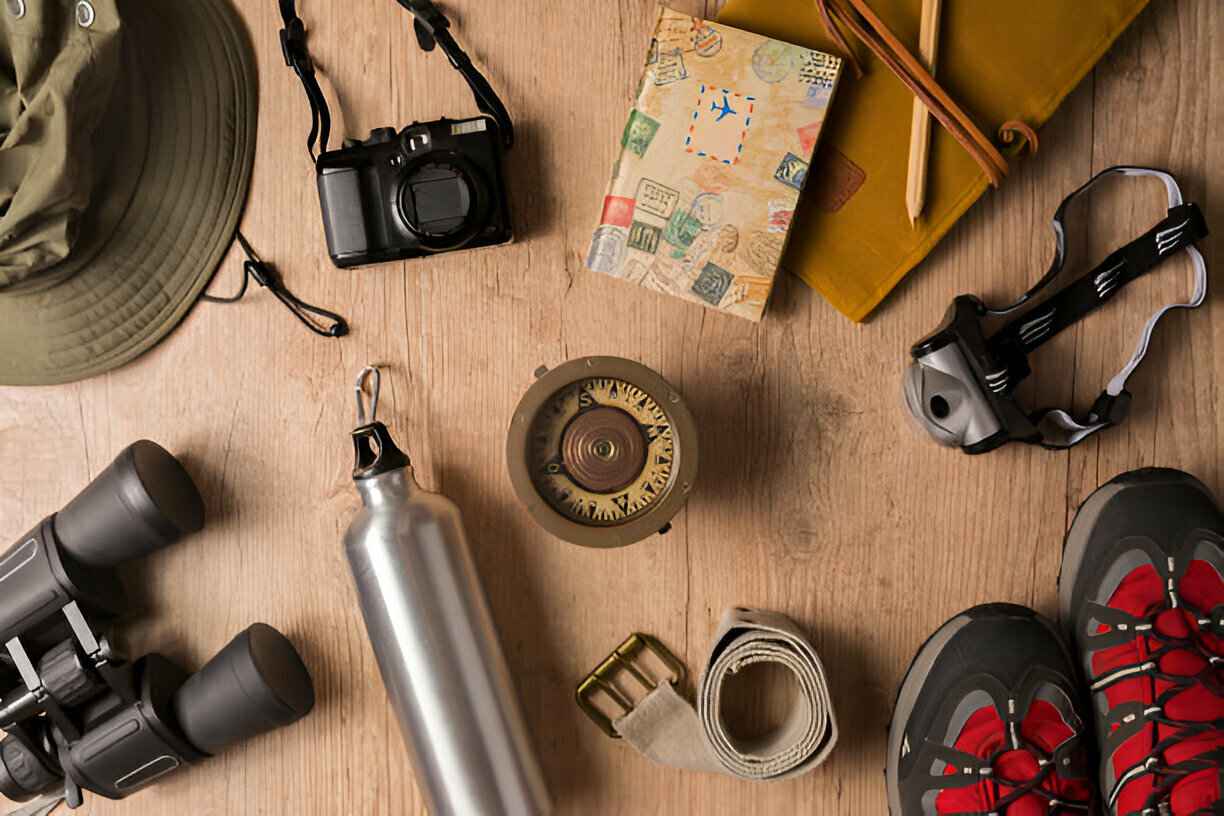
When you start off on a backpacking mission, you’re almost sure to be met with the challenge of finding fresh water. Streams and lakes seem to be perfect solutions, but is the water really safe to drink? Well, that is not such an easy question to answer. Drinking from streams or lakes can be quite easy, but there are risks involved in this case.
One of the major concerns is harmful bacteria, parasites, or viruses. They can contaminate the water. Streams and lakes face many sorts of pollutants. Those include animal waste, farm runoff, and human activities. Without treatment or filtration, they can contribute to a waterborne illness. They can ruin an otherwise enjoyable backpacking trip.
That said, under some circumstances, it is safe to drink from a stream or lake. Secluded and wild water sources are subjected to lower levels of pollution. They also have minimal human activity. Even in such cases, though one must be more cautious than usual. You should filter the water with a portable filter. Or, treat it with chemicals, such as iodine or chlorine tablets. This minimizes the chances of falling ill.
Although in the final analysis, the urge to drink from a stream or lake may seem good while backpacking, it is actually not so without precautions. The possible health risks that can come out from contaminated water are just too high. The necessary precautions for filtering or treating the water have become extremely important. Doing this is key to staying healthy outdoors. So remember to stay safe first. Think about investing in a good water filter for your next outdoor adventure.
Other Important Gears
- Water Filtration: A system that avails clean water by purification anytime during travel. Portable and light products are great.
- Sleeping Equipments: Lightweight sleeping bags that would be perfect according to the climate; trustworthy sleeping pads that supports your body; a sturdy, fast, and easy-to-assemble tent.
- Footwear: Boots that offer ankle support, moisture-wicking soles to prevent formation of blisters, ability to provide comfort.
- Nutrition and Dehydration: Dehydrated meals, energy bars, nuts, trail mix forEnergy Bars, Nuts, Trail Mixes for subsistence. Carry a portable stove and utensils to prepare food.
- Invest in the right gear, and deliberately plan your backpacking trips to yield the best experiences regarding comfort, safety, and enjoyment. The following is some tailored advice that will fit many different needs and budgets, so every adventurer can find the correct equipment for that journey.
Give more comfort and security to your backpacking, with the right gear and careful planning. All recommendations here will be specific according to particular needs and budgets, so all types of adventurers will find equipment for their journey.

